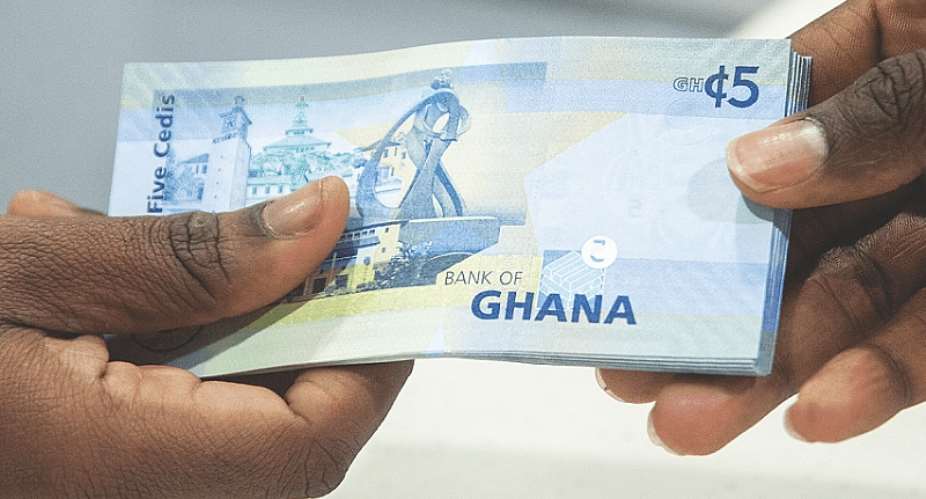The debate over which political party best manages Ghana’s economy has been in our political dispensation over two decades without any scientific justification for the allegations and counter-allegations among the two biggest political parties in Ghana (NDC, NPP).
This decade-long debate, inspired and motivated this piece from scientific perspective. In the quest to evaluate this issue, an open and accessible quality data would be needed from recognized international Database. In that respect, I extracted, studied and analyzed the historic Ghana Gross Domestic Product growth (GDP %) data from 1983-2020 from World Bank Database.
Attached below is 8year period examination and graphic representation of Ghana’s GDP growth rates for both the ruling government (NPP) from 2001-2008 and the opposition party (NDC) from 2009-2016 to determine which regime had best managed the economy in terms of GDP expansion.

Graph 1: National Democratic Congress (NDC), Gross Domestic Product growth rate trend from (2009-2008). Source: World Bank

Graph 2: New Patriotic Party ( NPP), Gross Domestic Product growth rate trend from (2001- 2008). Source: World Bank
As could be seen from the above graphs. The gragh1in colour yellow is the NDC GDP growth rates trend (2009-2016) and graph2 colour red is the NPP growth rate trend (2001-2008).
Comparatively, we are specifically looking at the High-low’s growth of both regimes. Per the graph1, historically the highest Ghana’s GDP growth rate occurred in 2011 thus 14.05% (see the yellow graph) under Mills/Mahama Regime and their lowest growth is 3.90% in 2015 and trend can be seen in the yellow graph (2009-2016).
The red graph2 is the ruling government (NPP) GDP growth rates, the highest growth occurred in 2008 that’s 9.15% and the lowest is 4.35% in 2007 under Kufuor/Aliu regime and the trend can be seen in (red area graph).
Findings
- The lowest growth in 2015 (3.90%) could be partly attributed to the shocks from the sudden fall of global commodities (crude oil, gold, cocoa) prices e.g cruel oil fell from $99/barrel to below $40, and subsequently, the breakdown of FSO Nkrumah (Ghana’s crude drilling ship) which amounted to huge revenues lost for the then government.
- The lowest growth in 2007(4.35%) all things being equal, also was as result of pre -crisis shocks of the 2007/2008 Global Financial Crisis (GFC).
- I found that, both regimes (NDC & NPP) were able to consistently grow the GDP little over 50% in post-crisis. Thus, NDC (2015-2016) and NPP (2007-2008). Again, tracking the average growth in normal times in both graphs do not show a consistent 50% except the miraculous jump in 2011 (14.05%)
Recommendation
For policy perspective, we should tailor national economic policies (monetary policy) to contain GDP growth fluctuations in both scenarios to plug-in more economic benefits especially in immediate post-crisis.
Conclusion
In nutshell, per this data I can conclude that Ghana GDP growth has strong momentum in post- crisis with little over 50% growth than compare to normal times in both regimes. This is consistent with empirical evidence which suggests that « all things being equal « emerging economies grows faster and strong in post-crisis (shocks/political). Classical example is the current Rwanda’s economy.
Therefore, Communicators of both ruling government (NPP) and opposition (NDC) should take note that, historically the best custodian and manager of Ghana’s economy in terms GDP growth rate is NDC (14.05%) in 2011, and that the contrast claims sometimes by H.E the Vice President Dr. Bawumiah and several of government communicators is not ONLY factually incorrect but non-existence in any available, recognize and accessible database and that NDC MUST NOT accept such position without bases.
By Evans DARKO, CREM RESEARCH LAB, FRANCE





 Lay KPMG audit report on SML-GRA contract before Parliament – Isaac Adongo tells...
Lay KPMG audit report on SML-GRA contract before Parliament – Isaac Adongo tells...
 Supervisor remanded for stabbing businessman with broken bottle and screwdriver
Supervisor remanded for stabbing businessman with broken bottle and screwdriver
 NDC watching EC and NPP closely on Returning Officer recruitment — Omane Boamah
NDC watching EC and NPP closely on Returning Officer recruitment — Omane Boamah
 Your decision to contest for president again is pathetic – Annoh-Dompreh blasts ...
Your decision to contest for president again is pathetic – Annoh-Dompreh blasts ...
 Election 2024: Security agencies ready to keep peace and secure the country — IG...
Election 2024: Security agencies ready to keep peace and secure the country — IG...
 People no longer place value in public basic schools; new uniforms, painting wil...
People no longer place value in public basic schools; new uniforms, painting wil...
 'Comedian' Paul Adom Otchere needs help – Sulemana Braimah
'Comedian' Paul Adom Otchere needs help – Sulemana Braimah
 Ejisu by-election: Only 33% of voters can be swayed by inducement — Global InfoA...
Ejisu by-election: Only 33% of voters can be swayed by inducement — Global InfoA...
 Minority will expose the beneficial owners of SML, recover funds paid to company...
Minority will expose the beneficial owners of SML, recover funds paid to company...
 Prof. Opoku-Agyemang has ‘decapitated’ the NPP’s strategies; don’t take them ser...
Prof. Opoku-Agyemang has ‘decapitated’ the NPP’s strategies; don’t take them ser...
